Page 185 of 288

restraint systems c> page 166, Child
Safety.
Tether anchors and tether straps
Fig. 14 1 Tether anchors: recess flaps behind th e rear
seatbacks
The tether anchors for the rear seating posi
tions are located in recesses in the rear win
dow shelf
c> fig. 141
A tether is a straight or V-shaped strap that
attaches the top part of a child restraint to
special anchorage points in the vehicle.
The purpose of the tether is to reduce the for
ward movement of the child restraint in a
crash, in order to help reduce the risk of head
injury that could be caused by striking the ve
h icle inter ior .
Forward facing child restraints manufactured
after September 1, 1999, are required by U.S.
federal regulations to comply with new ch ild
head movement performance requirements .
These new performance requirements make a
tether necessary on most new chi ld safety
seats.
A WARNING
Improper insta llation of chi ld res traints
w ill increase the risk of inju ry and death in
a c rash.
- Always follow the instructions p rov ided
by the manufacturer of the chi ld re
straint you intend to install in your Audi.
- Improper use o f ch ild restraint anchors
(incl uding tether anchors) can lead to in
jury in a co llision. The anchors are de-
-
Child S afety 183
signed to withstand only those loads im
posed by correctly fitted child restraints.
- Never mount two child restraint systems
on one LATCH lower anchor point.
- Never attach two child restraint systems
to one tether strap or tether anchorage.
- Never attach a tether strap to a tie -down
hook i n the Luggage compartment .
- Never use child rest raint tether ancho
rages to secure safety belts or other
kinds of occupant restraints .
- Never secure or attach any luggage or
other items to the LATCH lower ancho
rages or to the tether anchors.
- If you must insta ll a rearward facing
child safety seat on the front passenger
seat because of exceptional circumstan
ces and the
PASSENGER AIR BAG OFF
light does not come on and stay on, im
mediately insta ll the rear-fac ing ch ild
safety seat i n a rear seating position and
have the airbag syste m in spected by your
Audi dea le r.
Installing the upper tether strap on the
anchorage
Fi g. 14 2 Tether strap: proper rout ing a nd mount ing
Installing the tether strap
.,.. Release or deploy the tether strap on the
child res traint accord ing to the child re
straint manufacture r's instructions.
.,.. Guide the upper tether s trap
under the rear
head restr aint
c> fig. 142 (ra ise the head re
s tr aint if necessa ry).
... Ti lt the recess flap up to expose the anchor
bracket .
Page 186 of 288

184 Child Saf ety
• Attach the te ther strap anchorage hook into
the ope ning of the tether anchorage .
• Pull on the tether strap hook so that the
spring catch of the hook engages.
• Tighten the tether strap firmly following the
child restra int manufacturer's instruct ions .
Rele asing the tethe r strap
• Loosen the tension following the child re
straint manufacturer's instructions.
• Depress the spring catch on the hook and re
lease it from the anchorage.
({D Note
If you leave the child restraint with the
tether strap firmly installed for several
days, this cou ld leave a mark on the up
holstery on the seat c ushion and backrest
in the area whe re the te ther strap was in
s talled. The upholstery wo uld a lso be per
manently stretched around the tether
s t rap. This applies especially to leather
seats .
Using tether straps on rearward-facing
child restraints
Currently, few rear-facing child restraint sys
tems come with a tether . P lease read and
h eed the child rest raint system manufactur
e r's instructions carefully to determ ine how to
p rope rly insta ll the tethe r.
_& WARNING
A child in a re ar ward-f acing child sa fety
seat insta lled on the front passenger seat
w ill be seriously injured and can be ki lled if
the front ai rbag inflates -even wit h an A d
vanced Airbag System.
- The inflating a irbag wi ll hit the child
sa fety seat or infant carrier wit h great
force and w ill smash the ch ild safety seat
and child against the backrest, center
armrest, or door.
- If you must install a rearward facing
child safety seat on the front passenger
sea t because of exceptional circ umstan
ces and the
PASSENGER AIR BAG OFF
light does not come on and stay on, im
mediately install the rear-fac ing ch ild
safety seat in a rear seating position and have the airbag system inspected by your
Aud i deale r.
Additional Information
Sources of information about child
restraints and their use
There are a number of sources of add itiona l
information about child restra int selection, in
stallation and use:
NHTSA advises that the best chi ld safety seat
is the one that fits your ch ild and f its in your
vehicle, and that yo u will use correct ly and
consistently .
Try before yo u buy!
U.S National Highwa y Traffi c Safety Admin
istration
Tel.: 1 -888-327-4236 (TIY: 1-800-424-9153)
www. n htsa .gov
National SAFE KIDS Campa ign
T el.: (20 2) 66 2-0600
www.safekids.o rg
Safet y BeltSafe U.S .A
T el.: (80 0) 745 -SAFE (English)
T el.: (800) 74 7-SANO (Span is h )
www.carseat.org
Tran sport Canada Information Centre
Tel.: 1-800-333-0371 or ca ll
1 -6 13 -99 8-86 16 if yo u are in the Ottawa a rea
http ://www.tc.gc.ca/eng/roadsafety/
men u.htm
Audi Customer Relation s
Tel.: (800) 82 2-2834
Page 187 of 288

Smart Technology Notice about data
recorded by vehicle
control modules
Your veh icle is not equipped with an Event Da
ta Recorde r (EO R), installed by some manu
facture rs fo r the express purpose o f capturing
data for retr ieval after an accident or cras h
event . EDR's a re sometimes called "crash re
corders".
Some state laws res trict the retr ieval or down
l oadi ng of data stored by E DR's that were in
stalled in a veh icle for the exp ress purpose of
retrieving data after an accide nt or crash
event w ithout the owner's consent.
A lthough yo ur vehicle is no t equ ipped w it h an
EDR, it is equipped with a number of elect ron
ic control modules fo r various vehicle systems
such as, for examp le, eng ine f unction, em is
sion control, as well as for the airbags and
safety belt s.
These electronic contro l modules also record
veh icle -re lated data dur ing no rma l veh icle op
erat ion for d iagnostic and repa ir purposes .
T he recording capacity of the electronic con
trol modules is limited to data (no sound is re
corded) and only a small amount of data is ac
tually recorded ove r a ve ry limited pe riod of
time and stored when a sys tem faul t or o ther
condition is se nse d by a cont rol u nit. Some o f
the data then stored may re la te to vehicle
speed, dir ect io n, bra king as we ll as restra int
system use and perfo rmance in the event of a
crash or other condit ion. Stored data can only
be read and downloaded w ith special equip
ment.
Electronic stabilization
control (ESC)
Description
The ESC reinforces driver safety. It reduces
the r isk of slipp ing and improves driving sta
b ili ty . E SC detects cr itical s it u ations such as
the veh icle ove rsteer ing and understee ring or
Smart Technolog y 185
th e wheels a re sp inning . The vehicle is stabi
li zed by applying the brakes or red ucing en
gine torq ue. Once the ESC is act ive ly reg ulat
ing, the
G) i ndicato r light b links in the instru
ment cluster.
The anti-lock braking system (ABS), brake as s ist system, ant i-slip regu lation (ASR), e lec
tron ic different ia l loc k (EDU, electron ic differ
ential lock* (front wheel drive) and se lective
whee l to rque control* (a ll whee l drive) are in
teg rated in the ESC. The ESC suppo rts the sta
bilization of the vehicle th rough a change in
t h e s teer ing torq ue.
Anti-lock braking system (ABS)
ABS prevents the whee ls from locking when
braking . The vehicle ca n still be steered even
dur ing ha rd braking. App ly steady pressure to
the b rake peda l. Do not pump the p edal. A
puls ing in the bra ke peda l indicates t hat the
system is acting to st abil ize the ve hicle.
Brake assist system
The brake ass ist system can decrease braking
dis tance. It increases bra king power when the
drive r presses the bra ke peda l quickly in emer
gency s ituations. Yo u m ust pres s and hol d the
brake pedal unt il the dangerous s it u at ion is
ove r. In vehicles with adap tive c ruise control *,
the b rake assist system is more sensitive if the
distance detected to the vehicle ahead is too
small.
Anti-slip regulation (ASR )
ASR reduces eng ine power when the drive
whee ls beg in spi nning and adapts the fo rce to
the road conditions . This makes it easier to
start, accelerate and dr ive up inclines.
Electronic differential lock (EDL)
The EDL bra kes whee ls tha t a re sp inning and
trans fers the dr ive power to the othe r drive
whee l or w heels if the vehicle is equ ip ped with
a ll w heel d rive*) . This function is availab le up
to approximately 62 mph (100 km/h).
I n extreme cases, EDL au toma tically sw itches
off to keep t he b rake on the bra ked wheel
from overheat ing. The ve hicle is still working .,..
•
•
•
Page 188 of 288

186 Smart T echnol ogy
correctly. ED L will switch on again automati
cally when conditions have returned to nor
mal.
Electroni c inte raxle diff ere ntial lo ck */
s e le ct ive w heel t orqu e cont rol *
The electronic interaxle differential lock (front
wheel drive) or the selective wheel torque
contro l (all wheel drive) operates when driving
through curves. The front whee l on the inside
of the curve or both wheels o n the inside of
the curve are braked selectively as needed .
This minimizes s liding in the front wheels and
a llows for more precise driving through
curves. The app licab le system may not acti
vate when driving in wet or snowy conditions .
Post-collision bra ke ass ist
"Post-collision brake assist" can ass ist the
driver during a collision by reducing the dan
ge r of slipp ing and further co llision and by au
tomatic braking.
"Post-collision brake assist" functions during
front, side and rear collis ions when the a irbag
control module a detects a trigger level and
the co llision takes place at a dr iv ing speed
faster than 6 mph (10 km/h). The braking of
the vehicle happen automatically via the ESC
as long as the ESC, the hydraulic brake sys
tem, and the vehicle electrical system are not
damaged from the coll ision.
The fo llowing activ ities override the automat
ic braking during a collision:
- If the dr iver presses the accelerator peda l.
T here is no a utomatic braking.
- When the force on the press brake pedal is
stronger than the b raking force initiated by
the system . The vehicle is manually braked .
- When the ESC is damaged and the "post
collision brake assist" is not availab le.
A WARNING
- The ESC, ABS, ASR, EDL, electron ic inter
axle d ifferential lock or select ive wheel
torque control cannot overcome the laws
of physics. This is espec ially important
on sl ippery o r wet roads.
If the systems
begin acting to stabili ze your veh icle, you
should immediately alter your speed to
match the road and traffic conditions . Do
not let the increased safety prov ided
tempt you into tak ing risks. This could
increase your risk of a collision.
- Please note the risk of a collision increas
es when driving fast, especially through
curves and on slippery or wet roads, and
when dr iv ing too close to objects ahead .
ESC, ABS, the brake assist system, EDL,
electronic interaxle differentia l lock or
selective whee l to rque control cannot
p revent coll is ions.
- Press the acce lerator pedal carefully
when acce le rat ing o n even, slippe ry sur
f a ces such as ice and snow. The drive
wheels can spin even when these control
systems are installed and this can affect
driving stability and increase the risk of a
col lision.
(D Tips
- ABS and ASR only function correc tly
when all four wheels are eq uipped w ith
identical tires. Different t ire sizes can
lead to a reduction in engine power.
- Yo u may hear noises when the systems
described are working .
- If the
DJ or m] (USA models) !II] (Cana
da mode ls) indicator light appears, there
may be a malfunction
¢ page 22.
Page 189 of 288

Smart Technology 187
Switching ESC on and off
ESC turns on automatically when you start the engine .
Fig. 143 Upper center console: ESC button
bilization function of the ESC is limited or
switched off. The amount of stabilization con
tro l will differ depending on the level.
In the following unusual situations it may
make sense to switch the ESC sport mode on
to allow the wheels to spin:
- Rocking the vehicle to free it when it is stuck
- Dr iving in deep snow or on loose gro und
The ESC is designed to function in levels. De
pending on the leve l that is selected, the sta-
Sport mode on ESC
/ASR off
Sport mode off or
ESC /ASRon
Behavior
The actions taken by the
The actions taken by the Th
e fu ll stabilization fu nc-
ESC system to stabilize the ESC system to stab ilize the tion of the ESC and ASR is
vehicle are limited, the an- vehicle are very limited, available again.
ti-slip reg ulation (ASR) is the anti-slip regulation
sw itched off
q .&.. (ASR) is switched off q .&. .
Operation Press the If) OFF I button P ress and hold the If) OFFI Press the I.$ OFF I button
briefly. button longer than 3 sec- again.
onds.
Indicator II turns on. II and II * turn on . II turns off or II and
lights II* turn off.
Driver mes-
Stabilization control Stabilization control
Stabilization control
sages (ESC):
sport. Warning! (ESC): off. Warning! Re- (ESC): on
Restricted stability stricted stability
A WARNING
You should only sw itch the ESC off if your
driving ability and the traffic s ituation al
low. This could increase the risk of slip
ping.
- The stabilizing function is limited in ESC
sport mode. The driving wheels could
spin and the vehicle could swerve, espe
cially on slick o r slipp ery road surfaces .
- T here is no vehicle stabilizat ion when
ESC/ASR are switched off.
@ Tips
-If Audi magnet ic ride is malfunctioning,
the ESC sport mode cannot be switched on or off. If ESC sport mode is activated
or ESC is switched off, it w
ill be switched
back on automatically.
- ESC sport mode cannot be switched on
or the ESC/ASR cannot be switched off
when the cru ise contro l system* or the
adaptive cru ise contro l* are actively reg
ulat ing.
Brakes
New brake pads
New brake pads do not achieve their full brak
ing effect during the first 400 km. They must
be "broken in" first. However, you can com
pensate fo r the slightly reduced braking force ""
Page 190 of 288

188 Smart Technology
by pressing firmly on the brake pedal. Avoid
heavy braking during the break-in period.
Wear Brake pad
wear is largely dependent on the
way the vehicle is driven and on operating
conditions. This is especially true if you are
driving frequently in the city and on curves or
with a sporty driving style.
Operating noise
Noises may occur when braking depending on
the speed, braking force and outside condi
tions such as temperature and humidity.
Effect of water and road salt
In certain situations, for example after driving
through water, in heavy rain, after overnight
condensation or after washing your car, the
braking effect can be reduced by moisture or
ice on the brake rotors and brake pads. The
brakes must be "dried" first with a few careful
brake applications.
At higher speeds and with the windshield wip
ers turned on, the brake pads press against
the brake rotors for a short amount of time.
This action which is not felt by the driver hap
pens at regular intervals and facilitates a bet
ter reaction time for the brakes in wet weath
er.
The braking effect can also be reduced if you
are driving on salted roads and you do not ap ply the brakes for long periods of time. The
layer of salt on the brake rotors and pads
must be worn off first when the brakes are ap
plied.
Corrosion
Leaving the vehicle parked for long periods of
time, low mileage and avoiding heavy braking
can contribute to corrosion on the brake ro
tors and dirty brake pads.
If you usually avoid heavy braking or if there is
corrosion present, occasional heavy braking at
high speeds is recommended to clean the
brake rotors and pads
Q &. .
Brake system malfunction
if you notice that the brake pedal travel has
suddenly gotten larger, then a brake circuit
may have failed. Drive to your authorized Audi
dealer or qualified repair facility immediately
to have the problem corrected. On the way
there, drive with reduced speed and keep in
mind that a long braking distance and in
creased pressure on the brake pedal will be
necessary.
Low brake fluid level
When the brake fluid level is low, malfunc
tions in the brake system may occur. The brake fluid level is electronically monitored .
Brake booster
The brake booster amplifies the pressure you
apply to the brake pedal. It only works when
the engine is running.
A WARNING
-- You should perform braking maneuvers
for the purpose of cleaning the brake
system only if road conditions permit.
Other road users must not be put at risk -
you may cause an accident!
- Before descending a steep grade, reduce
speed and shift transmission into a lower
gear or lower driving range. Do not ride
the brakes or hold the pedal down too
long or too often. This could cause the
brakes to get hot and diminish braking
efficiency.
- Do not "ride the brakes" by resting your foot on the pedal when you do not intend
to brake. This may cause the brakes to
overheat, premature wear and increased
stopping distance.
- Under certain climatic and operating conditions such as passing through wa
ter, driving in heavy rain or after washing
the vehicle, the effectiveness of the brakes can be reduced. In winter, ice can
accumulate on the brake pads, linings,
discs and drums. Carefully apply brakes
Page 191 of 288

for a test. Brakes will dry and ice coatings will be cleaned off after a few
careful brake applications.
- Driving for an extended period of time on
salt-covered roads without using your
brakes can also affect braking efficiency.
Clean off accumulated salt coating from
brake discs and pads with a few careful
brake applications.
- If you damage the front spoiler, or if you
install a different spoiler, be sure the air
flow to the front brakes is not obstruct
ed. Otherwise the brake system could
overheat reducing the effectiveness of
the entire brake system.
- Failure of one brake circuit will impair
the braking capability resulting in an in
creased stopping distance. Avoid driving
the vehicle and have it towed to the near
est Audi dealer or qualified workshop.
- Never let the vehicle roll to a stop with
the engine shut off.
- If the brake booster is not working, the
brake pedal must be pressed considera
bly harder to make up for the lack of
booster assistance.
(D Note
- Never let the brakes "rub" by pressing
the pedal lightly when braking is not really necessary. This causes the brakes
to overheat and increases braking dis
tance and causes wear.
- Before driving on a long stretch with
steep slopes, reduce your speed and shift
to the next lower gear This makes use of
the engine braking effect and relieves
the brakes. If you need to brake addition
ally, brake in intervals and not continu
ously.
(D Tips
- If the brake booster is not working, you
must press the brake pedal with much
more force then normal.
- If you retrofit your vehicle with a front
spoiler, wheel covers or similar items,
Smart Technology 189
make sure that the air flow to the front
wheels is not interrupted. Otherwise the
brake system can become too hot.
Electromechanical
steering
The electromechanical steering supports the
driver's steering movements.
Power steering adapts electronically based on
the vehicle speed.
The vehicle still has full steering functionality if the power steering fails or when the engine
is stopped (towing) . To steer, you must apply
much more force than usual.
Indicator lights and messages
• Do not drive vehicle: steering defective
If this indicator light turns on and stays on
and this message appears, the power steering
may have failed.
Do
not continue driving . See your authorized
Audi dealer or qualified repair facility.
• Do not drive vehicle: steering defective
There is an electronic steering column lock
malfunction . You cannot turn the ignition on.
Do
not tow your vehicle because it cannot be
steered. See your authorized Audi dealer or qualified repair facility.
c~ij Steering malfunction: you can continue
driving
If the indicator light turns on, the steering
wheel may be more difficult to move or more
sensitive than usual. The steering wheel may
also be at an angle when driving straight.
Drive slowly to your authorized Audi dealer or
qualified workshop to have the malfunction
corrected.
Ill Steering lock: system fault! Please con
tact Service
There is an electronic steering column lock
malfunction.
•
•
•
Page 192 of 288

190 Smart T echnol ogy
Drive to an authorized Audi dea le r or qualified
repair facility immediately to have the ma l
function corrected .
_& WARNING
Have the system malfunction repaired as
soon as possible by an authorized Audi
dealer or qualified repair facility, as th is in
creases the risk of an acc ident.
(D Tips
If the . or ,1:-ij indicator light on ly stays
on for a short time , you may continue driv
ing .
ALL wheel drive
(quattro)
Appl ies to vehicles: wit h all whee l drive
In all wheel drive, all four wheels are pow
ered .
General information
In all wheel drive, the driving power is divided
between all four wheels. This happens auto
mat ica lly depending on you r driv ing behavior
as we ll as the current road conditions. Re fer
to
¢ page 185, Electronic stabilization con
trol (ESC) .
The all wheel drive concept is designed for
h igh engine power . Yo ur vehicle is exception
a lly powerful and has excellent driving charac
teristics bot h under normal driving conditions
and on snow and ice . A lways read and fo llow
safety precautions
c> & .
Wint er t ire s
By using all wheel drive, your vehicle has good
forward motion with standard tires in winter
conditions . However, in winter we recommend
using winter or all season t ires on
all four
wheels, because this will improve the braking
effec t.
Snow cha in s
If there are snow chain laws, snow chains
must also be used on vehicles with a ll whee l
drive
c> page 241, Snow chains.
Replacing tire s
For vehicles with a ll wheel d rive, only wheels
with the same ro lling circumference should be
u sed. Avoid wheels with different tread
depths ¢
page 236 .
Offroad vehicle?
You r A udi is not a n offroad vehicle -there is
not enoug h ground clearance. For this reason ,
avoid difficu lt terrain. Refer to
c::> page 266.
A WARNING ~
- Also, in vehicles with a ll w heel drive,
adapt your driving sty le to the c urrent
road and traffic cond itions. Do not let
the increased safety provided tempt you into taking risks .
- The braking ability of your veh icle is lim
ited to the traction of the wheels. In this
way, it is not different from a two wheel d rive vehicle . Do not be tempted to ac
celerate to a high speed when the road is
slippe ry this inc reases the r is k of an acci
dent.
- Note that o n wet s treets, the front
wheels ca n "hydrop lane " if driv ing at
speeds that are too high. Unlik e fron t
wheel drive vehicles, the engine does not rev higher sudden ly when the vehicle be
g ins hydroplaning. For this reason, pay
attention to the road conditions regard less of your speed.
Energy management
The starting ability is optimized
The energy management system manages
the electrical energy distribution and optimiz
es the availability of electrical energy for
starting the engine.
When a vehicle with a conventiona l energy
system is not d riven for a long time , the bat
te ry is drained by equ ipment ( for example the
immobilizer) . In certain c ircumstances, there
cou ld may not be enough energy to start the
engine .
1J1-
 1
1 2
2 3
3 4
4 5
5 6
6 7
7 8
8 9
9 10
10 11
11 12
12 13
13 14
14 15
15 16
16 17
17 18
18 19
19 20
20 21
21 22
22 23
23 24
24 25
25 26
26 27
27 28
28 29
29 30
30 31
31 32
32 33
33 34
34 35
35 36
36 37
37 38
38 39
39 40
40 41
41 42
42 43
43 44
44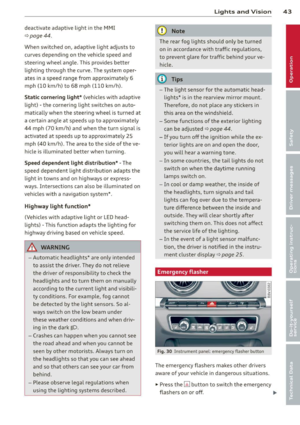 45
45 46
46 47
47 48
48 49
49 50
50 51
51 52
52 53
53 54
54 55
55 56
56 57
57 58
58 59
59 60
60 61
61 62
62 63
63 64
64 65
65 66
66 67
67 68
68 69
69 70
70 71
71 72
72 73
73 74
74 75
75 76
76 77
77 78
78 79
79 80
80 81
81 82
82 83
83 84
84 85
85 86
86 87
87 88
88 89
89 90
90 91
91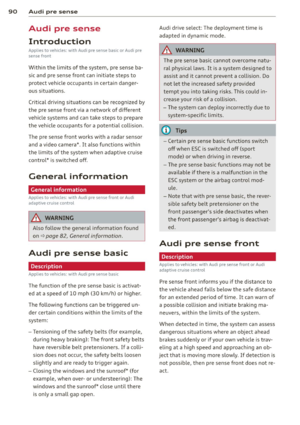 92
92 93
93 94
94 95
95 96
96 97
97 98
98 99
99 100
100 101
101 102
102 103
103 104
104 105
105 106
106 107
107 108
108 109
109 110
110 111
111 112
112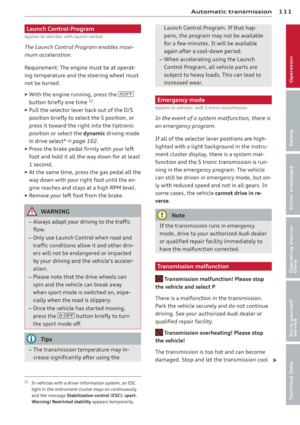 113
113 114
114 115
115 116
116 117
117 118
118 119
119 120
120 121
121 122
122 123
123 124
124 125
125 126
126 127
127 128
128 129
129 130
130 131
131 132
132 133
133 134
134 135
135 136
136 137
137 138
138 139
139 140
140 141
141 142
142 143
143 144
144 145
145 146
146 147
147 148
148 149
149 150
150 151
151 152
152 153
153 154
154 155
155 156
156 157
157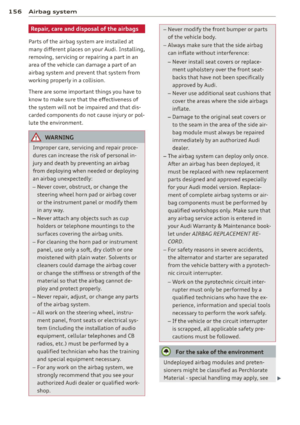 158
158 159
159 160
160 161
161 162
162 163
163 164
164 165
165 166
166 167
167 168
168 169
169 170
170 171
171 172
172 173
173 174
174 175
175 176
176 177
177 178
178 179
179 180
180 181
181 182
182 183
183 184
184 185
185 186
186 187
187 188
188 189
189 190
190 191
191 192
192 193
193 194
194 195
195 196
196 197
197 198
198 199
199 200
200 201
201 202
202 203
203 204
204 205
205 206
206 207
207 208
208 209
209 210
210 211
211 212
212 213
213 214
214 215
215 216
216 217
217 218
218 219
219 220
220 221
221 222
222 223
223 224
224 225
225 226
226 227
227 228
228 229
229 230
230 231
231 232
232 233
233 234
234 235
235 236
236 237
237 238
238 239
239 240
240 241
241 242
242 243
243 244
244 245
245 246
246 247
247 248
248 249
249 250
250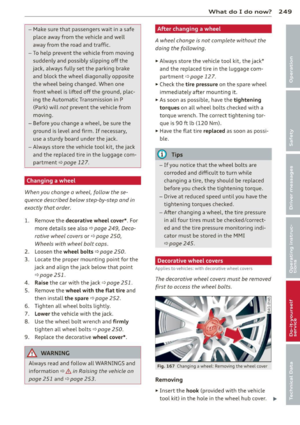 251
251 252
252 253
253 254
254 255
255 256
256 257
257 258
258 259
259 260
260 261
261 262
262 263
263 264
264 265
265 266
266 267
267 268
268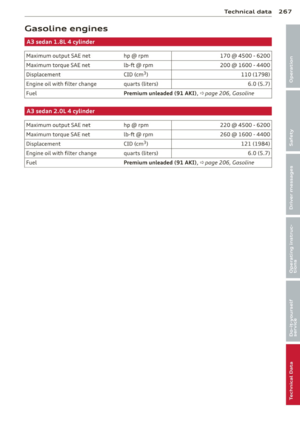 269
269 270
270 271
271 272
272 273
273 274
274 275
275 276
276 277
277 278
278 279
279 280
280 281
281 282
282 283
283 284
284 285
285 286
286 287
287






